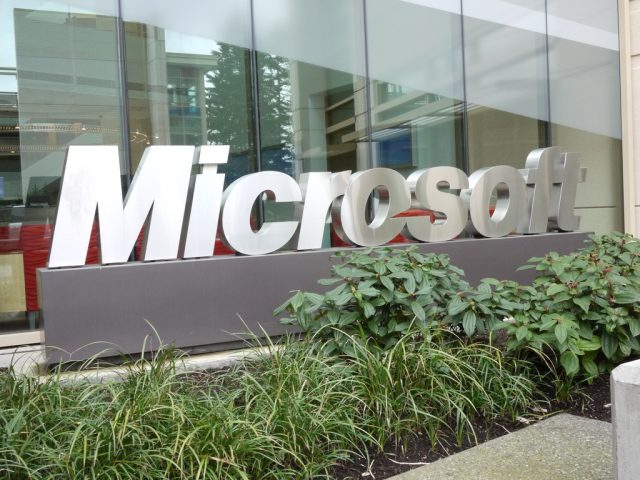
Microsoft has posted its results for the first quarter of its 2018 financial year. Revenue was $24.5 billion, an increase of 12 percent year on year, with an operating income of $7.7 billion, up 15 percent, a net income of $6.6 billion, up 16 percent, and earnings per share of $0.84, up 17 percent.
Microsoft currently has three reporting segments: Productivity and Business Processes (covering Office, Exchange, SharePoint, Skype, and Dynamics), Intelligent Cloud (including Azure, Windows Server, SQL Server, Visual Studio, and Enterprise Services), and More Personal Computing (covering Windows, hardware, and Xbox, as well as search and advertising).
The company also continues to report numbers from LinkedIn both as part of the Productivity group and independently. No year-on-year numbers are offered for the social network, as it still hasn't been under Microsoft ownership for a full year. LinkedIn had revenue of $1.1 billion, with a cost of revenue of $0.4 billion and operating expenses of $1.0 billion, for a total loss of $0.3 billion.
The Productivity group as a whole reported revenue of $8.24 billion, with operating income of $3.0 billion, representing increases of 28 percent and 3 percent, respectively. Compared to a year ago, that's a revenue increase of $1.8 billion; $1.1 billion of that is the aforementioned LinkedIn revenue, with the remainder attributed to Office 365. Commercial Office 365 seats are up 32 percent, and consumer Office 365 seats are up 17 percent to 28 million. Overall, commercial Office revenue was up 10 percent, consumer 12 percent. Dynamics products also showed strong growth, up 13 percent. Last quarter the company announced that Office 365 subscriptions outnumbered perpetual licenses, and earlier this month the company said that by its 2019 fiscal year, it expected two-thirds of Office customers to be 365 subscribers.
Cloud group revenue was $6.9 billion, up 14 percent, with operating income of $2.1 billion, up 20 percent. The growth came almost entirely from server products and cloud services, which in aggregate grew by 17 percent, or $0.8 billion. Revenue from Azure was up 90 percent, and compute usage more than doubled year on year. Server products grew by a more modest 2 percent. The number of Enterprise Mobility users grew 68 percent, to 55 million.
In the More Personal Computing group, revenue was down less than 1 percent, at $9.4 billion, with operating income up 26 percent to $2.6 billion. Phone revenue dropped to essentially zero, hurting revenue by 3 percent, but this was substantially offset by growth in both search and Surface revenue. Surface revenue was up 12 percent or $0.1 billion, taking it back over the $1 billion a quarter mark, and search revenue was up 15 percent. Xbox Live has 53 million monthly active users; up 6 million from last year, but flat sequentially.
Windows OEM Pro revenue was up 7 percent; non-Pro down 1 percent. The Pro revenue outpaced the commercial PC market; the non-Pro was in line with the consumer PC market. Windows Commercial and cloud revenue rose 7 percent on the back of subscription revenue growth.
Microsoft continues to talk about its commercial cloud annualized run rate, and it now exceeds $20 billion. Seven quarters ago it was just under $10 billion, so it has more than doubled in just under two years. This run rate, decried by former CEO Steve Ballmer as "bullshit" in 2015, continues to obfuscate the relative strengths of Office 365, Dynamics 365, and Azure.
Surface Laptop and the 2017 Surface Pro both had their first full quarter of availability. The Surface line-up was already starting to look a little long in the tooth a year ago—they continued to use Intel's Skylake chips, while that same quarter saw the release of Kaby Lake processors. Surface Laptop should in principle give greater market reach, appealing to a range of customers not interested in the Surface Pro tablet. Surface Pro's upgrade was very modest but compelling for artists, and its Kaby Lake processor made it attractive particularly for those using the Surface Pro 3 or older. And yet, while revenue was up on the back of these products, it perhaps wasn't as much up as one might have expected.
reader comments
79